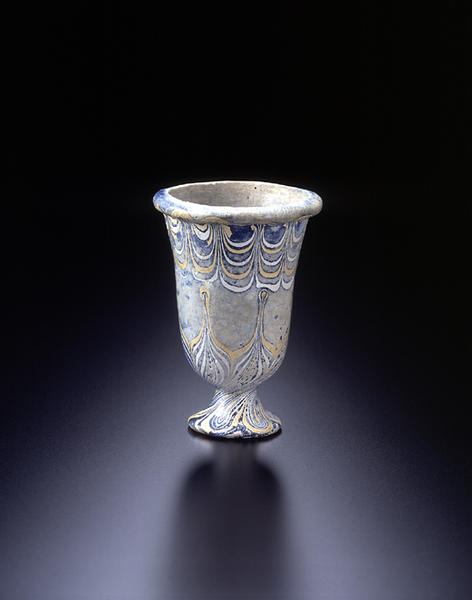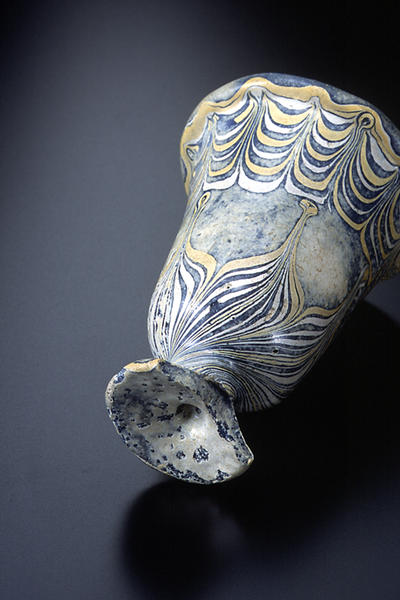Footed Cup
- Egypt
- First half of the 14th century B.C.
- Glass
- H-7.7
Catalogue Entry
This cup with foot was made by the core technique. The body is dark cobalt blue and decorated with yellow and white glass. The cup section opens outward with its mouth rim spreading out. The foot is a short conical shape with the center of the bottom hollowed. There are two bands of decoration, one running from the mouth edge over the top half of the cup, and the other from the bottom half of the cup to the bottom edge of the foot. The upper band is a spiralling design mixing the yellow and white glass thread, which is pulled upward into a festoon pattern. The lower band has the yellow glass restricted above and below with five parallel bands of white glass pulled up and down across it to form a feather pattern. The upper edges of the feather pattern are pulled up quite high so that they touch the lower edge of the upper design, giving a unified feel to the vessel's overall decoration. The pattern on the cup extends to the mouth rim and to the bottom edge of the foot, After the decoration was applied, the mouth rim was pulled outward and the foot twisted into position. The form and decoration of this cup are extremely finely and beautifully executed1).
Fully formed glass vessels appeared suddenly in Egypt during the reign of Thutmose 3 of the 18th dynasty of the New Kingdom. This pharaoh sent troops on repeated invasions of Syria and Mesopotamia, regions where the production of glass vessels had already begun, and it is thought that glass craftsmen taken to Egypt with the returning armies and began to make glass ware in workshops set up in the pharaoh's palace. The majority of 18th Dynasty glass vessels were core-formed glass, a heat-resistant clay core was formed around a metal rod, and then colored glass in a viscous state was wrapped around that core to create the body of the vessel. Their multi-colored beauty and diverse range of forms made these 18th Dynasty works the most superb glass ware of antiquity.
1)Published in Birgit Nolte, Die GlasgefaBe im alten Agypten, Berlin, 1968.(Japanese edition, 1985, P. 182, fig.1-0)

